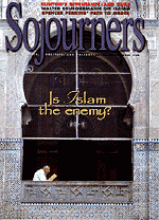The three men are relaxing in front of a small corner park in Chicago's Garfield Park neighborhood. A fountain sparkles in the bright morning sun of one of those rare, unbeatably beautiful summer mornings that tease Chicagoans into thinking the Midwest winter will never come. The little park makes a strange but pretty and inviting oasis in the otherwise completely urban surroundings, and a handful of children are playing on the park swings behind the men who sit quietly watching the morning pass.
Two of the men are sanitation workers on break; the other has been a community resident since 1963. They sit among two rows of fold-out metal chairs placed directly by the entrance to the park. The chairs and the cooler of Gatorade that accompanies them seem like a nice communal touch to the park setting, but the men explain their presence here is part of a monthlong effort organized by the local alderman's office to keep drug dealers and their customers out of the park so that some actual children can spend some actual playtime in it.
The impeccably maintained park and its drug-dealing inhabitants are just one of the contrasting realities of life in Garfield Park and adjoining West Side Chicago neighborhoods. Rows of charming, barn-roofed, brightly painted single family homes that would not look out of place in Bavaria are cornered by trash-strewn vacant lots. New construction struggles to rise alongside burned-out, barely boarded up greystones that provide refuge for a gamut of unsavory activities. Laughing children push go-carts along streetsides where demure young men wait for the opportunity to make their next drug sale, and working-class families try to find a way to raise their children safely amid the pathologies of poverty that surround them.
Read the Full Article
